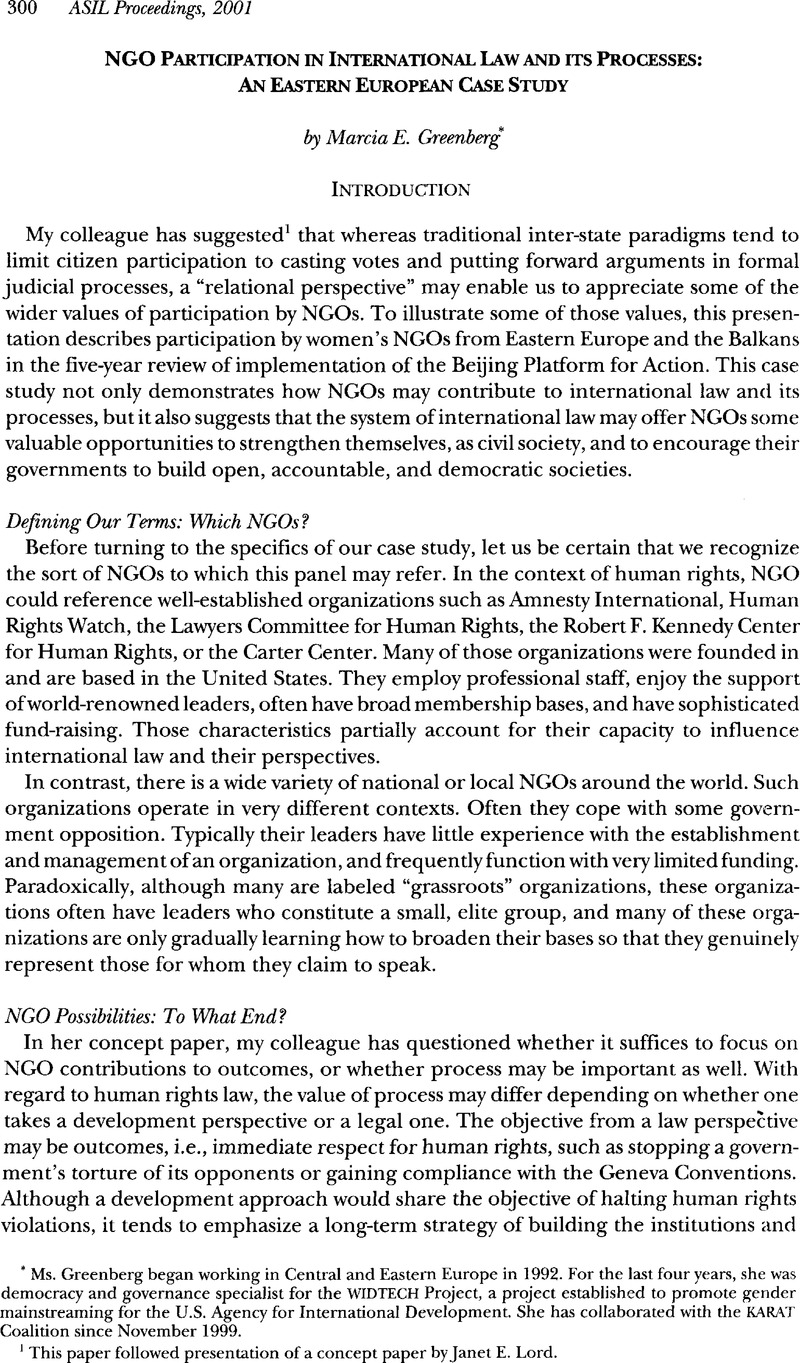No CrossRef data available.
Published online by Cambridge University Press: 28 February 2017

1 This paper followed presentation of a concept paper by Janet E. Lord.
2 Poverty, Education and Training, Health, Violence, Armed Conflict, Economy, Decision-making, Institutional Mechanisms, Human Rights, Media, Environment and the Girl Child.
3 UN Dep’t of Pub. Info., Platform For Action and the Beijing Declaration: Fourth World Conference on Women, Beijing, China, UN Sales No. E.DPI/1766 (1996).
4 Id. at 1-2.
5 Much of this presentation is taken from Marcia E. Greenberg, A Beijing +5 Success Story: Women from Eastern Europe Strengthening their Democracy Skills, Widtech Info. Bull. (Women in Development Technical Assistance Project, Washington, DC), Mar. 2001, at <http://www.widtech.org>.
6 Ideally, KARAT members would have been in Washington to represent themselves. Having worked with them since November 1999, the author has tried at least to share firsthand experience and observations.
7 Two other meetings took place within the next several weeks: women from Central Asia and the Caucasus met and endorsed the NGO statement, and official delegates from the region also met in Budapest and incorporated much of the NGO work.